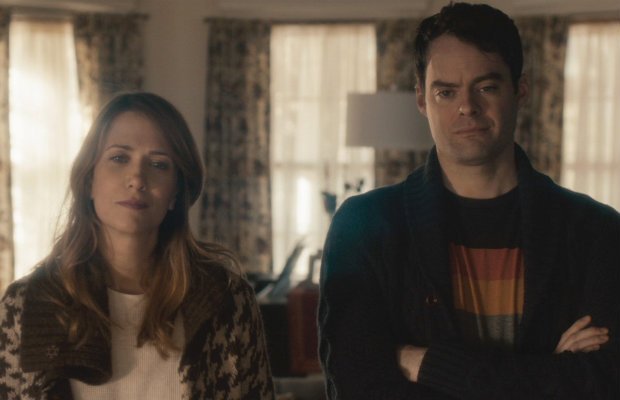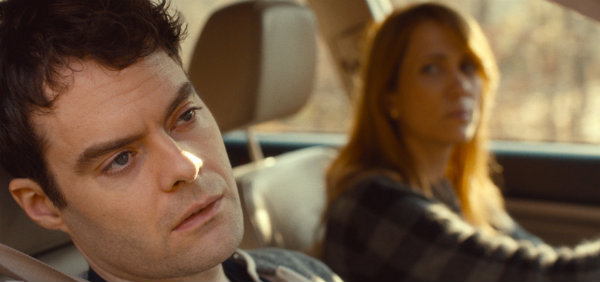IONCINEPHILE of the Month
IONCINEPHILE of the Month: Craig Johnson (The Skeleton Twins)
IONCINEMA.com’s IONCINEPHILE of the Month feature focuses on an emerging filmmaker from the world of cinema. This September, we put the spotlight on the writer-director of The Skeleton Twins. After exploring the thirtysomething slackerhood with the 2009 SXSW Film Festival preemed True Adolescents, Craig Johnson’s sophomore feature visits a paralleled (re)union of sibling spirits where the pursuit of happiness is challenged by the skeletal remains of what was left in one’s past. An examination of the sometimes vacuous, sometimes endearingly noir phases that the psyche tends to visit, the Sundance U.S. Dramatic Competition Waldo Salt Screenwriting Award winning film mowed down Park City auds with the versatile Kristin Wiig and Bill Hader proving that comedy and drama do mix.
Johnson’s delicate empathetic portrait of the misfits carries some vintage moments, and was instantly picked up by Lionsgate/Roadside Attractions for distribution and is landing in theatres September 12th.
Here’s our profile on Craig, and make sure to click on over to his Top Ten Films of All Time list (as of September 2014).
Eric Lavallee: During your childhood…what films were important to you?
Craig Johnson: A favorite childhood movie memory of mine is when my dad would bring home a 16 millimeter projector from the high school where he worked and we would go to the library and check out 16 millimeter film reels. This was in the 80s, before we got a VCR. They weren’t full features, usually 30, 40 or 60 minute films. I remember a lot of Jaques Cousteau underwater documentaries, ‘The Lorax’, this weird TV movie called ‘The Electric Grandmother‘ and, my favorite, the Chuck Jones’ ‘Rikki-Tikki-Tavi’. I was obsessed with cobras for months after seeing that.
Lavallee: During your formative years what films and filmmakers inspired you?
Johnson: I grew up in the 80s so I was a child of Spielberg and Lucas. But when I was about 11, my mother brought home Lasse Hallstrom’s ‘My Life As A Dog‘ on VHS and it completely broke my brain. I’d never really seen a movie before that didn’t have monsters and lasers and car chases in it. I certainly had never seen a foreign film where you had to read subtitles. But mostly I had never seen anything so bittersweet and emotional and complex. The main kid was about my age and everything felt so real and reflective of how life actually was. I thought “a movie can be that?” It’s still one of my favorite movies of all time.
Lavallee: If we do a little digging, we find that your working relationship with co-writer Mark Heyman dates back to your days at Tisch on Rob Meyer’s short film. On The Skeleton Twins, where did the first kernels of the story and perhaps the sibling characters come from, and could you discuss your working writing collaboration.
Johnson: Mark Heyman and I were pals at NYUs graduate film school and we shared enough of a sensibility that we thought we could be good screenwriting collaborators. So we sat down at a coffee shop one day and just started brainstorming story ideas. Mark told a story about an acquaintance who was involved in a student-teacher relationship and we thought that was fertile territory to explore in a movie. As we developed the story, we gave the student character a sister and at some point we realized that we really cared about- the brother and sister, and they should be the centerpiece of the movie. While not overtly autobiographical in any way, there is a lot of me and my sister in the Milo/Maggie relationship.
Mark and I would write together, with a sort of “dueling laptops” set-up, at the same table either across from each other. We divided the script up into note-carded scenes and each day we’d tackle a few notecards, each individually writing scenes, and then do a little “show and tell” of what we wrote. We’d give each other our thoughts and would tweak there on the spot. It was fun. Mark and I are really good friends, which isn’t a requirement of a writing partner, but it sure makes it a lot more pleasant.
Lavallee: Impressively funny and intimately dark in one sitting, the film played like gangbusters in Park City and my first post-screening thoughts were about the potentially daunting challenge of striking the right tone, and knowing when and how to disperse both the comedic and drama elements. Seeing that your debut film was more inline with comedy, do you start from a comedic “skeleton” and then infuse it with more sober moments?
Johnson: If you go back and watch it, my debut film, “True Adolescents” is also a pretty even mix of comedy and drama. Funny and emotional. I guess it’s just how I see the world. But it’s true that I often think of funny bits in the early phases. If it’s not gonna be funny on some level, I’m not interested. But it’s also a certain kind of humor I’m interested in- a humor that comes from observing human behavior rather than traditional jokes and gags.
Lavallee: While Kirsten Wiig had already worked with dramatic material, Bill Hader was relatively new to the more bruised, repressed ego type of character. Could you underline how you might have workshopped his character…
Johnson: Bill Hader and I had one evening where we talked about his character- I gave him some of Milo’s backstory and he mentioned some of the physical stuff he was thinking about, the way Milo would carry himself, how he’d move his hands, his posture, stuff like that. But that was really it. When I first met Bill before I cast him, I was instantly struck by the “real” Bill Hader- the Bill Hader who was just sitting there talking to me in his normal voice at a bar about movie nerd stuff like Robert Altman and The Criterion Collection. I remember being struck by how gentle his actual speaking voice was and I thought “If he does nothing more with his voice than what he’s doing right now, he’d be perfect for Milo”. I never even had him read from the script. The first time I heard him say a line as Milo was the first day of shooting.
Lavallee: Additionally, you make a rather ballsy aesthetic choice in terms of the look of the film, with what I recall being a muted, earthy palette. Did you employ a look that would best serve the naturalism that comes across in the performances.
Johnson: The film takes place in Rockland County, New York in the fall, so I knew I wanted a crisp but warm fall look to the film. I wanted it to feel austere but also cozy on some level, hence a lot of Earth tones and reds and browns and oranges, especially for Maggie’s house. I think Maggie is hiding somewhat under an uber-cozy design aesthetic: lots of throw blankets and plants and she’s almost always in a warm, fall sweater. It’s her cocoon. And yes, the natural look complements the natural performances.
Lavallee: Can you discuss the collaborative process you had with the Costume designer…
Johnson: Kaela Wohl: because the film is contemporary it’s easy to overlook the costumes in this film. But I think they perfectly compliment the characters. I mentioned how Maggie hides herself in sweaters, but I think Milo does too— it’s a twin thing! But it makes perfect sense that these siblings, who feel so vulnerable to the outside world, would hide in big, warm, comforting sweaters. Also Lance is always wearing the perfect thing. We decided Lance was originally from Boulder, CO so he rocks a few Colorado T-shirts. And I love his matching denim shirt on denim jeans in the dinner scene with mom. Kaela also did amazing work with the extras during the Halloween bar scene, especially the umbrella jellyfish person.
Lavallee: Can you discuss the collaborative process you had with the Composer?
Johnson: Nathan Larson: So much of a tone of a movie has to do with music and I think Nathan absolutely nailed it. To me, musicians are wizards. I have no idea how they translate my vague ramblings about the “vibe” I’m going for into actual music. What Nathan accomplished was particularly tricky because I wanted to make sure the score was rich and emotional but not syrupy and sentimental. I get a lot of compliments on the balance of tone in this movie. I have to give a lot of the credit to Nathan.
Also a worthy mention for…
The PAs. They do everything on set. Everything. They get the coffee. They direct traffic. They drive people. They stand out in the cold, shivering, locking up a location. They clean up messes. They deal with unreasonable requests. They get yelled at. And they never get any credit. It’s like the assistants who we all know run Hollywood. The PA’s run movie sets. God love ‘em.
Eric Lavallée is the founder, CEO, editor-in-chief, film journalist and critic at IONCINEMA.com (founded in 2000). Eric is a regular at Sundance, Cannes and TIFF. He has a BFA in Film Studies at the Mel Hoppenheim School of Cinema. In 2013 he served as a Narrative Competition Jury Member at the SXSW Film Festival. He was an associate producer on Mark Jackson's This Teacher (2018 LA Film Festival, 2018 BFI London). In 2022 he served as a New Flesh Comp for Best First Feature at the 2022 Fantasia Intl. Film Festival. Current top films for 2022 include Tár (Todd Field), All That Breathes (Shaunak Sen), Aftersun (Charlotte Wells).






























